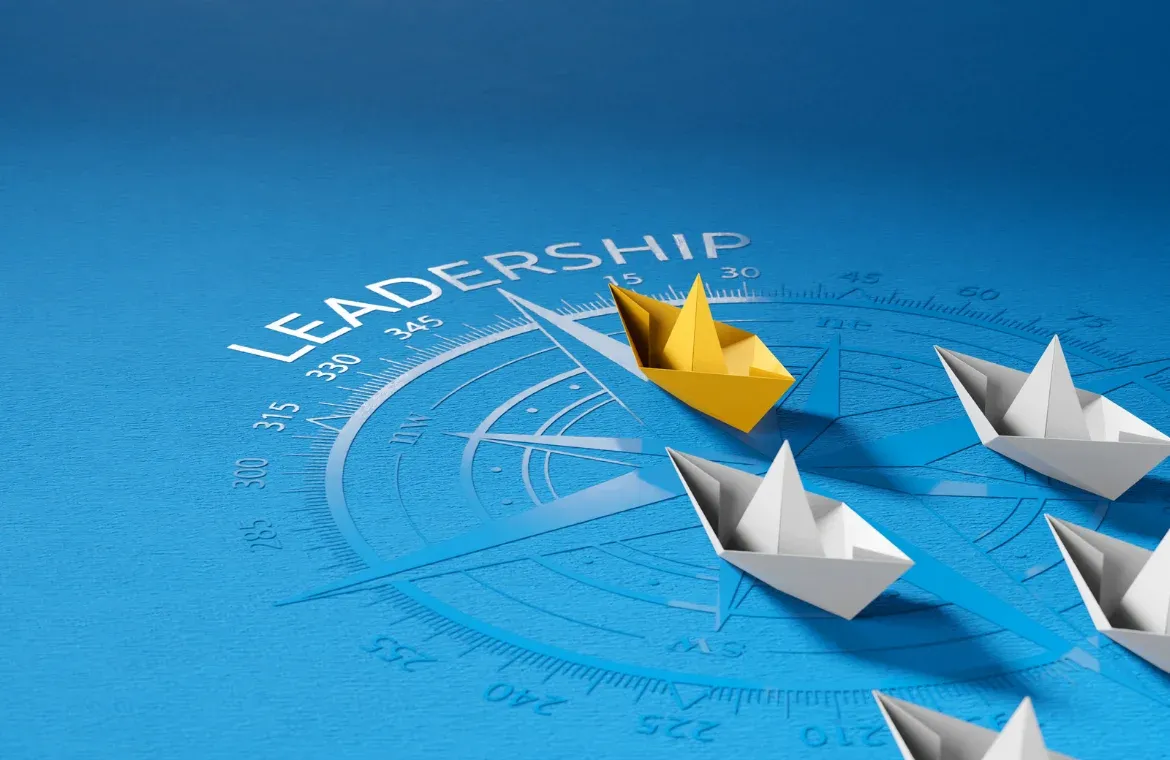Is Adaptive Leadership the Cornerstone of Senior Executive’s Success in 2026?

In the contemporary business environment, adaptability isn’t just an advantage, it’s essential. As markets shift and technologies evolve, leaders must respond with agility, foresight, and resilience. Adaptive leadership equips them to navigate complexity, embrace change, and lead with confidence.
At its core, it’s about recognizing that change is constant and learning to lead through it, not around it.
Adaptive leadership represents a powerful methodology developed by Ronald Heifetz and Marty Linsky that enables organizations to thrive amidst uncertainty. This approach differs fundamentally from traditional leadership models by encouraging experimentation and learning.
“To improve is to change; to be perfect is to change often.” -Winston Churchill
Ready to future-proof your leadership capabilities?
The question emerges: Will adaptive leadership become the cornerstone of executive success in 2026? This exploration examines adaptive leadership fundamentals, critical success indicators, and strategies for building adaptive organizational cultures capable of withstanding tomorrow's business challenges.
Deep Expertise in adaptive leadership positions executives at the forefront of organizational transformation. The following sections provide actionable insights for leaders ready to master this essential capability.
What is adaptive leadership?
Adaptive leadership is the ability to lead through change by empowering others, embracing uncertainty, and encouraging innovation. It focuses on solving complex challenges by fostering collaboration and learning.
Why is adaptive leadership important?
Adaptive leadership is essential because it equips leaders to navigate uncertainty, drive change, and respond effectively to complex challenges. In a world of rapid technological shifts, evolving work models, and global disruptions, adaptive leaders foster resilience, empower teams, and encourage innovation. They embrace learning, remain flexible in their strategies, and lead with emotional intelligence qualities that are critical for building trust, sustaining performance, and guiding organizations through transformation.
5 Indicators That Define Adaptive Leadership Success
Success markers distinguish forward-thinking executives from traditional managers. These characteristics separate leaders who thrive from those who merely survive organizational disruption.
1. Embracing Technological Change and Innovation
Adaptive leaders view technological disruption as opportunity rather than threat. Innovation extends beyond adopting new tools it requires cultivating mindsets that question established practices. These leaders experiment proactively with emerging technologies whilst remaining open to strategy adjustments based on results.
2. Building Resilience and Agility in Teams
Team resilience centers on rapid recovery from setbacks. Adaptive leaders create environments where teams bounce back from challenges stronger than before. The World Economic Forum's 2025 Future of Jobs Report ranks resilience, flexibility, and agility amongst the most critical soft skills for modern workforces.
Resilient teams "play offence when others are playing defence". They recover swiftly from failure, adjust to market realities, and embrace experimentation without guaranteed outcomes.
3. Leading with Emotional Intelligence
In 2026, emotional intelligence (EQ) will be a non-negotiable leadership skill especially in hybrid and remote environments. Leaders who can understand and regulate their own emotions, remain composed under pressure, and empathize with their teams are far more likely to build trust and drive collaboration. Emotional intelligence accounts for nearly 90% of the traits that distinguish top-performing leaders.
4. Encouraging Collaboration Over Control
Traditional command-and-control leadership is giving way to more collaborative models as businesses evolve. Collaborative leadership fosters innovation by bringing together diverse perspectives in psychologically safe environments. By breaking down silos and leveraging collective intelligence, adaptive leaders are better equipped to solve complex challenges that no single leader can tackle alone.
5. Fostering Continuous Learning Culture
Continuous learning enables competitive advantage amidst constant change. Adaptive leaders prioritize and reward knowledge-sharing environments. They exemplify growth mindsets through experiential learning, perspective challenges, and new experience pursuit.
Learning cultures serve as powerful retention mechanisms workers believing their employers support upskilling are eight times more likely to envision career paths within their current companies.
How Executives Can Build Adaptive Leadership Skills?
In an era defined by constant change, adaptive leadership is no longer optional, it’s essential. For executives, developing this skill means learning to lead with agility, resilience, and emotional intelligence, especially in complex, fast-evolving environments.
Recognize the Need for Adaptability: In a world of constant change, adaptive leadership is no longer optional it’s essential for navigating complexity with agility and resilience.
Cultivate Self-Awareness: Understand your strengths, weaknesses, and emotional triggers to stay composed and make thoughtful decisions under pressure.
Lead with Empathy: Actively listen, value diverse perspectives, and build trust across teams to foster collaboration and psychological safety.
Encourage Experimentation: Embrace innovation, accept failure as part of growth, and adjust strategies based on real-time feedback to drive continuous improvement.
Invest in Leadership Development: Enroll in leadership courses that offer structured learning, peer interaction, and expert coaching to build skills like systems thinking and change management.
Create a Culture of Learning: Use leadership programs as a platform to reflect, challenge assumptions, and model a growth mindset for your teams.
Lead by Example: Demonstrate adaptability in your actions, inspiring your organization to embrace change and thrive in uncertain environments.
By investing in leadership courses, executives not only enhance their own adaptability but also model a growth mindset for their teams. In doing so, they position themselves and their organizations to thrive amid uncertainty.
Future of Adaptive Leadership
As we move beyond 2026, adaptive leadership will evolve from personal competency into an organizational imperative. Artificial intelligence and advanced analytics will no longer be peripheral tools they will become leadership partners, offering real-time insights into team dynamics, market shifts, and emerging opportunities. Executives who can interpret and act on this intelligence with agility will outpace those relying on intuition alone.
Simultaneously, leadership structures will become more distributed and networked. Instead of a single visionary at the top, influence will flow across interconnected teams empowered to make rapid, data-informed decisions. Adaptive leaders will learn to orchestrate collaboration across these networks, emphasizing trust, transparency, and shared purpose.
Yet, amid the surge of digital sophistication, the most successful leaders will double down on what makes them distinctly human. Empathy, ethical judgment, and the ability to inspire meaning in uncertainty will define the post-digital leader. Adaptive leadership beyond 2026 will not simply be about reacting to change, it will be about shaping it with consciousness and care. Those who blend technological fluency with human depth will set the tone for a new era of leadership: one that is not just adaptive, but truly transformative.
Frequently Asked Questions
Q1. What makes adaptive leadership crucial for executives in 2026?
Adaptive leadership is essential for executives in 2026 due to the increasingly volatile business environment. It enables leaders to navigate uncertainty, embrace technological change, and foster a culture of continuous learning and innovation, which are critical for organizational success in rapidly changing markets.
Q2. How does adaptive leadership differ from traditional leadership approaches?
Unlike traditional leadership models that rely on hierarchy and rigid structures, adaptive leadership emphasizes flexibility, shared decision-making, and collaboration. It empowers teams to take initiative, experiment with new ideas, and respond swiftly to challenges, making it more suitable for today's complex business landscape.
Q3. What are the key indicators of successful adaptive leadership?
Successful adaptive leadership is characterized by five key indicators: embracing technological change and innovation, building resilient and agile teams, leading with emotional intelligence, encouraging collaboration over control, and fostering a culture of continuous learning throughout the organization.
Q4. How does adaptive leadership influence executive decision-making?
Adaptive leadership shapes executive decision-making by enabling leaders to make choices in uncertain environments, balance short-term actions with long-term vision, and utilize feedback loops for quick adaptation. This approach allows for more effective and responsive decision-making in complex situations.
Q5. How can organizations create an adaptive culture?
Organizations can create an adaptive culture by empowering employees to take initiative, encouraging experimentation and learning from failure, and building psychological safety for open communication. This involves fostering an environment where diverse perspectives are valued, and teams feel comfortable taking risks and sharing ideas without fear of retribution.

TalentSprint
TalentSprint is a leading deep-tech education company. It partners with esteemed academic institutions and global corporations to offer advanced learning programs in deep-tech, management, and emerging technologies. Known for its high-impact programs co-created with think tanks and experts, TalentSprint blends academic expertise with practical industry experience.



